Oceans of opportunity
CLADmag
from Cladbook2017
Issue 3.2016
PhotoCredits: Waterstudio
Koen Olthuis has been touting the benefits of floating cities for years – and now people are starting to take notice
A number of high-profile projects have recently brought attention to Koen Olthuis’s approach to living on water. Those include the floating Citadel apartment block in the Netherlands and important large-scale leisure projects such as luxury private islands in Dubai, floating hotels and resorts in the Maldives and a snowflake-shaped hotel off Norway. The potential for floating architecture, Olthuis says, goes far beyond one-off developments: it’s an urban planning tool.
“For the past 15 years, I’ve been designing these floating structures,” says Olthuis, who established his design firm Waterstudio in 2003. “When I started, all the other architects thought I was crazy, but now this approach is starting to be adopted by developers. We’re also talking to governments around the world about how floating developments can upgrade and improve their cities.” The big picture in all this, according to Olthuis, is that extending cities beyond the waterfront and indeed further out to sea reduces the pressure on overpopulated urban areas – where 70 per cent of people will live by 2050 – and offers flexible solutions for problems thrown up by rising sea levels and climate change.
How do floating structures work at a city level?
Governments worldwide are looking at how floating developments can improve their cities. I propose a system of modular floating developments – floating urban components that add a particular function to the existing grid of a city. With this system, any question a city asks can be answered immediately. If a city needs parking, bring in floating parking. If it has green issues, bring in floating parks and Sea Trees [Waterstudio’s offshore green structures]. The system is responsive to the needs of dynamic urban communities.
Is floating architecture the way forward for urban living?
It’s project to product. You’ll be able to order buildings in, and sell or lease buildings you don’t want or need. We’ve only explored a fraction of the possibilities, but in the next 10 to 15 years, more and more architecture will start to explore the possibilities of floating developments and it will grow from something that’s a fringe architecture to something that’s mainstream. The stupid thing is that we live in dynamic communities and yet we build static structures. With rapidly changing social structures and technologies, we need flexible cities. I’m not saying we have to build floating cities, but that every city that is next to the water should have at least 5 per cent of its buildings on the water. That would create flexibility.
It’s not the only way, but it’s something that is inevitable. It’s about rethinking and finding solutions for major problems.
What other advantages are there?
We believe green is good but blue is better. Water provides many tools to make more durable and sustainable cities. You have water cooling for the buildings, you have flexibility, you have buildings that rise and fall with the water level, you don’t have to demolish a building that’s no longer needed because you can repurpose it or even sell it. People, developers and politicians are starting to see that this is something that brings in money and solves problems. It’s a feasible way to build better cities.
What do you mean by flexibility?
I don’t mean that you’ll be able to take your house and move to another city or another neighbourhood. I mean flexibility on a larger scale, where cities and urban planners are able to move a complete neighbourhood half a mile or bring in temporary floating functions – like stadiums – and use them for one or two years before they leave for another city. This large-scale flexibility makes sense. Take the Olympic Games. It’s so strange that every four years we build so many hotels and stadiums and only use them for a few weeks. Imagine if as a city you could just lease these floating functions from a developer. Cities who don’t have as much money as London or Rio or Beijing could also host these types of events because it would cost much less money.
Is it something you can foresee happening in the near future ?
Yes, maybe not with stadiums – because we can put them up easily – but with the hotel business, certainly. Qatar has the World Cup in 2022 and they need 35,000 hotel rooms for that event. But if they built 35,000 hotel rooms, within 10 years they’d be empty. So they’re thinking about using cruise ships. As the harbour facility is not big enough, they’re also thinking about the idea of fl oating harbours, or fl oating cruise terminals – something that can facilitate these cruise ships for a few weeks, and then a: er that you can bring the fl oating harbours to another location.
Can you tell us about Amillarah Private Islands?
Yes. With OQYANA Real Estate Company and developers Dutch Docklands, 33 private islands are being built as part of The World Islands project in Dubai. The islands are being sold by Christie’s International Real Estate, with a starting price of US$10m. It’s a really high-end project. The fl oating islands look like tropical islands covered in trees, but in fact they’re more like superyachts. They’re built in Holland and then moved to the location in Dubai and anchored there. They are self-su5cient with their own electricity and their own water. Within the next 10 years there’ll be more development around them, so we’re making it look like its own archipelago. If you fly over, it looks like a series of green islands. OQYANA has a masterplan around Amillarah that includes shops, hotels and all kinds of leisure architecture. This is just the first step of the development, but the beauty of this floating architecture is that it moves very fast. Once you’ve built the islands you can just tow them in and connect them to the boKom, either with cables or telescopic piles and they’re ready. Compare that to the manmade islands at The World. There’s still very liKle built there. It’s di5cult to get labour there, di5cult to build the right foundations and there’s no electricity or water, so developers don’t know how to build there without losing money.
Have any been sold?
Not yet. We’ll have an island there, like a show home, from December this year (2016). With the history of the property market in Dubai, it’s beKer to have the first islands there so people can have a look and understand what it’s all about, especially at the prices people pay in this type of market. I should add that if I only ever build floating islands for the rich then I’m doing something wrong. The start of this story for me was to create a new tool for cities that are facing urbanisation, overpopulation and climate change – and also for cities that need to brand themselves to aKract inhabitants. As well as being able to answer these big, fast-changing urban problems, these floating structures bring a certain character and appeal to a city – a USP.
Why does your concept appeal to resort or hotel developers?
On water, leisure architecture, including resorts and hotels, has the possibility to change. You can adapt and create functions that are not only moveable but also transformative through time, for instance, through the seasons. With seasonal structures you can open up the buildings in the summer, make buildings more dense or more spread out. You can add functions or take them away. To me, it’s one big playing field and we’re trying to work out what it means for the future of leisure architecture and real estate, not just how these things will look, but the economic eUects too.
What kind of economic benefits might there be?
A project we started working on a few years ago was a floating hotel and conference centre for the Maldives – the Greenstar. As well as answering fast-changing urban problems, floating structures bring a certain character to a city – a USP The star-shaped hotel has five legs, each with 80 rooms inside, but instead of building five legs, we build six. One of these legs will stay in a harbour in India. In five or seven years time, when the hotel needs refurbishing, you bring the sixth leg to the hotel and connect it, sending the others one by one to be renovated. The hotel doesn’t need to shut down, and the work can be carried out where it’s easy and cost-eBective to get the materials and labour to do it.
What other projects are you working on?
We’re working in the Middle East, in Abu Dhabi, Dubai and Oman, exploring the potential of ecotourism. We’re looking at building satellite resorts for land-sited hotels, that float out at sea where there are coral reefs or mangroves. Floating resorts don’t leave any scars on the environment – they’re scarless developments, which can even have a positive eBect on the environment. For example, we work with marine engineers and environmentalists to help build floating structures that aKract underwater life. In places like Dubai, it’s so hot that it’s very
diLcult to create the right environment for fish and marine life, but the shade of these floating islands can provide a starting point for new marine ecosystems. We’re also working with master developer Dutch Docklands and the Maldivean government on the ongoing Five Lagoons Ocean Flower resort and residences. Finally, we’re looking at developing cities that face troubles with the environment, density and infrastructure – and seeing how water can be part of that solution.
What are the challenges?
Progress on Norway’s Krystall Hotel is slow because of laws that prevent building on the shoreline. Regulations and laws can be a hurdle, and may need to be changed to adapt to floating architecture. But, we are slowly moving to a marketplace where these floating developments are accepted. There’s a bright future for this technology.
Slum Schools
Waterstudio has been pioneering the concept of floating facilities that can be moored at waterside slum communities anywhere in the world. City Apps are floating developments based on a standard sea-freight container. City Apps can be established in water where there is scarcity of space and can be used to upgrade sanitation, housing and communication installations. The first City App, a floating school, is being built for a slum in Dhaka. “One billion people live in slums worldwide and half of them are close to the water. We can use City Apps to instantly improve the quality of life there,” says Olthuis. Because governments see these as temporary solutions, it’s much easier to get permission to do this than to build a facility on land.
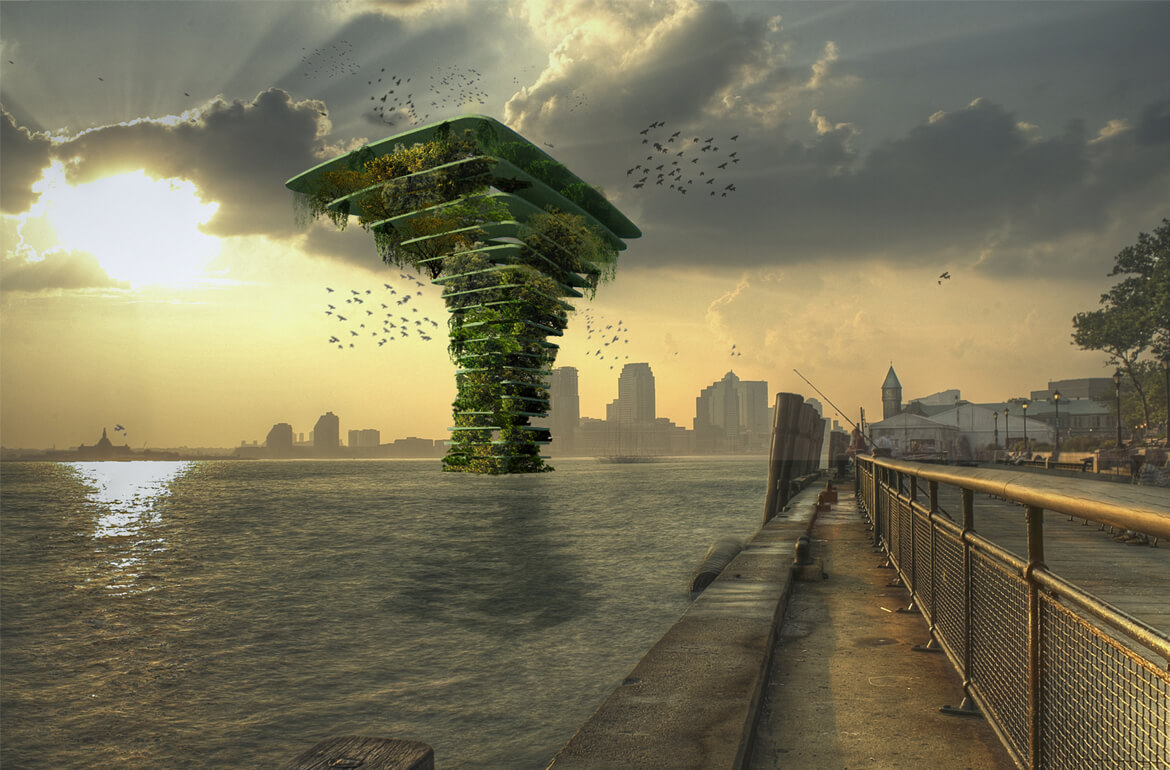
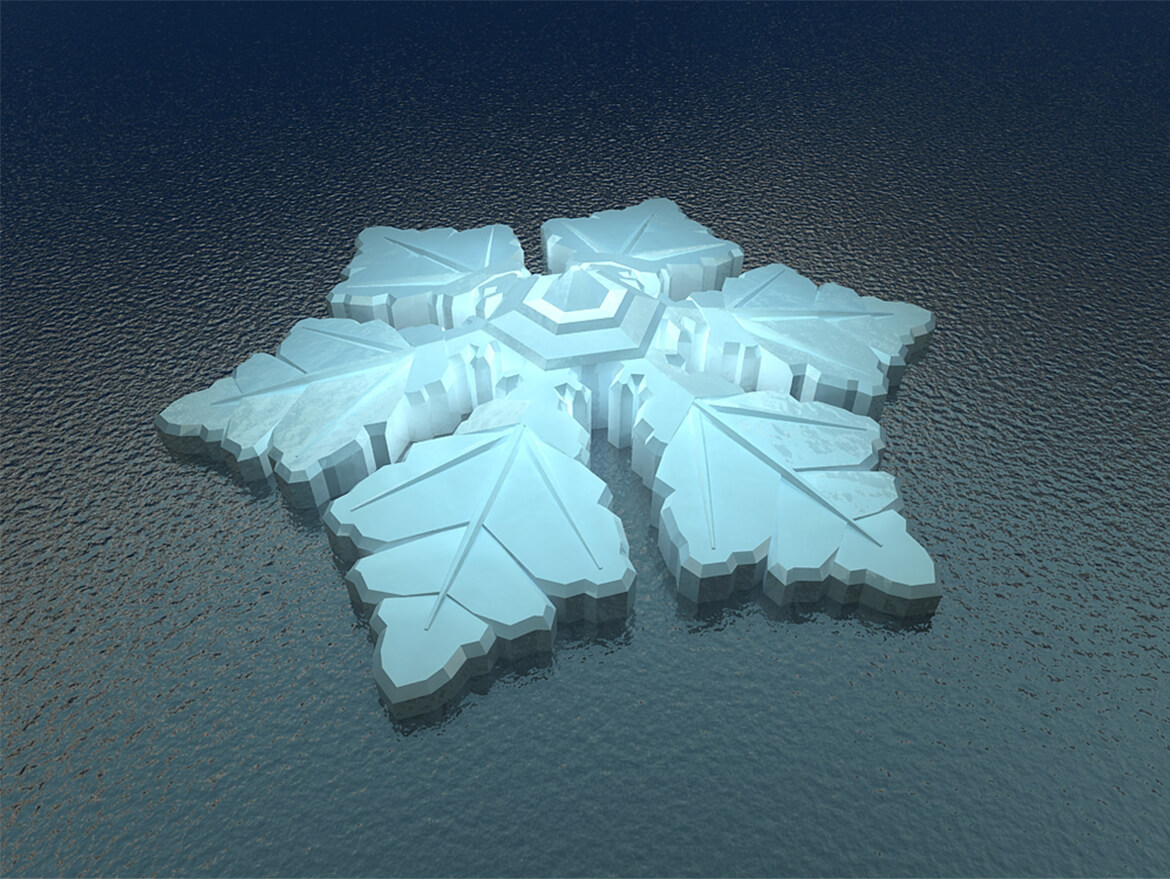
Click here for the full article
Sea Tree at Cover
By Centre for the future of museums
Cover Trendwatch 2017
Photo Credits: Waterstudio

Sea Tree
By Pierre-Mathieu Degruel
Cercle
2017
Photo Credits: Waterstudio
This prospective project created by the Waterstudio agency is designed to be located in harbours basins. This sea tree is a floating structure composed of superimposed immersed and emerged terraces. On each level a different ecosystem evolves and offers green habitats for animals rejected from citied (birds, bees, bats…). Under the sea’s surface, the tree recomposes an environment favourable to small marine creatures and, when the climate allows it, artificial coral reefs. A real modern day Noah’s Ark, this growth catalyser of fauns and flora is inaccessible to man. The cities of New York and Singapore are seriously considering installing some.
Waterstudio’s floating sea wall harvests blue energy from crashing water
By Tafline Laylin
Inhabitat
December.2015
Certain world leaders might be dragging their feet on addressing climate change, but in the meantime, Koen Olthuis and the rest of the Waterstudio crew are working on solutions that we can use today. The Blue energy floating sea wall is a floating breakwater that doubles as an energy generator. Called The Parthenon, the floating breakwater not only stems the crash of water pushing into a harbor, but harvests the tremendous energy a wall of water like that can generate.
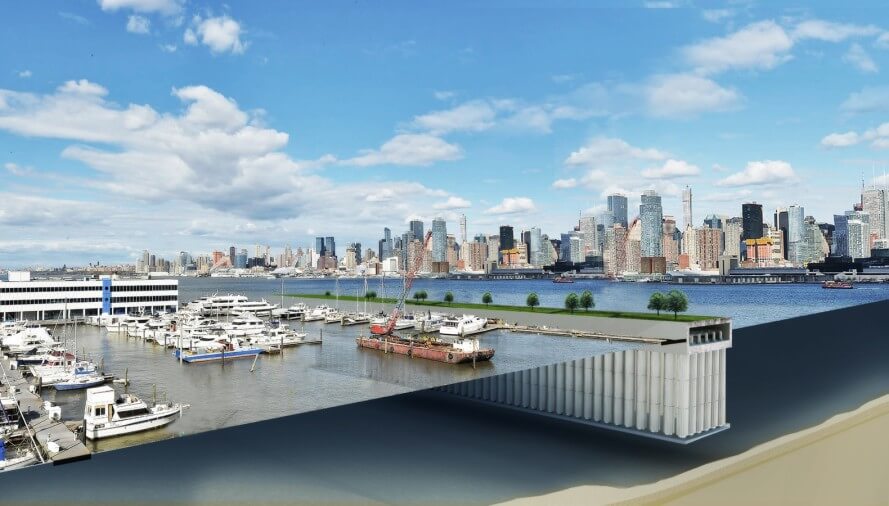
Waterstudio used the Hudson River to illustrate their new design’s function. “In a harbour on the Hudson river in New York the wave conditions are so strong that a sea wall must protect its boats. The strong current in the river is constantly attacking it and water is pushing itself against and through the fixed wall, which results in more corrosion of the sea wall every year.”
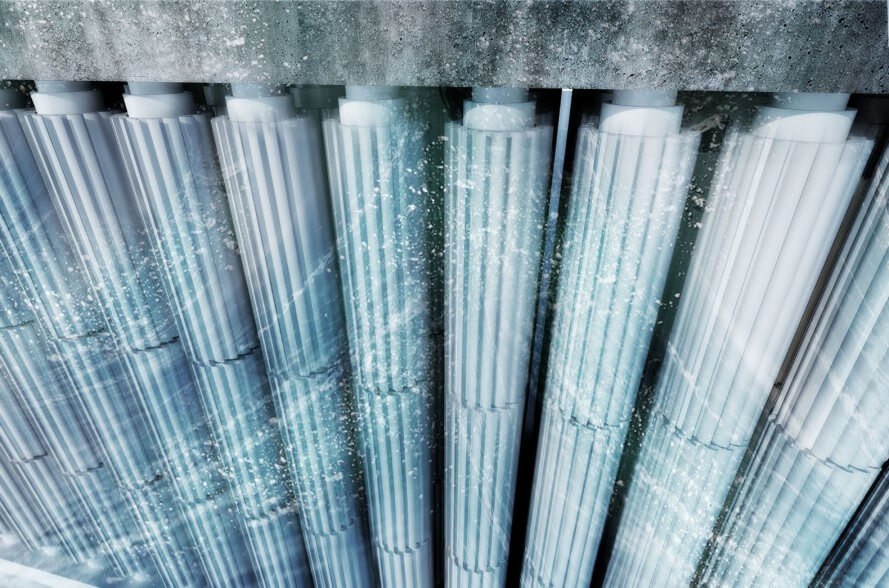
The floating sea wall acts as a permeable breakwater that converts the wave power into electrical energy while reducing the waves’ impact on the harbor at the same time. “The floating breakwater lives with the force of the river instead of fighting it,” they told Inhabitat in an email.
Related: Aquatect Koen Olthuis tells Inhabitat how to embrace rising sea levels
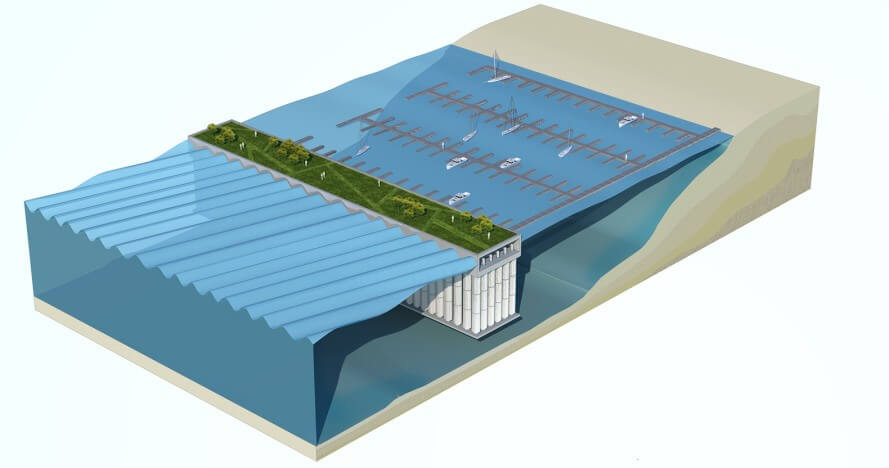
The columns of the sea wall are comprised of 3-foot cylinders that rotate – both clockwise and counter clockwise – at low speed. The energy created by this rotation is then captured in a concrete box inside the floating platform. The cylinders are filled with water to give the structure flexibility without affecting in any way the efficacy of the wall in reducing the wave’s impact on the harbor. The whole thing is then anchored to the riverbed, and the top can double as an urban green space or boulevard.
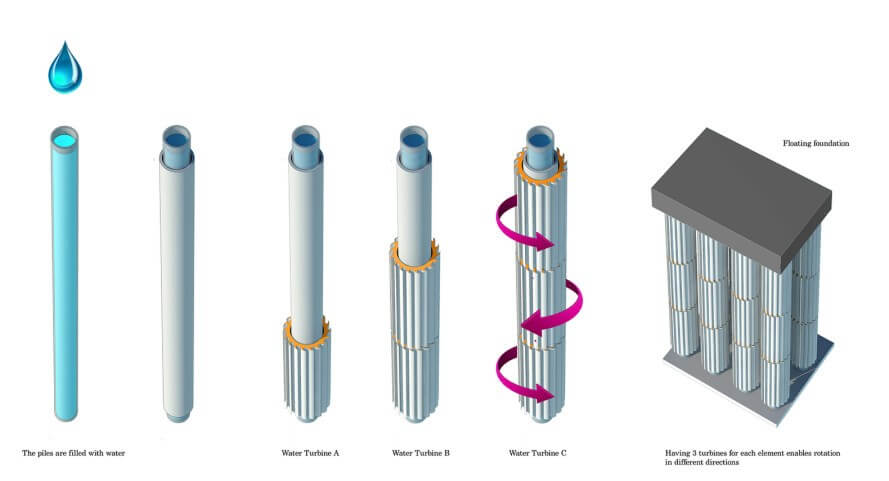
“The Parthenon blue energy sea wall resembles the column structure of the famous ancient temple in Greece,” according to Waterstudio, “but divers see it as a part of the sunken city of Atlantis.”
Why Blue is Better
Annelie Rozeboom
Hi Europe
October.2015
Architect Koen Olthuis draws on a roll of paper while explaining why we should be building our cities on the water and how he is planning to help the poor with his ideas. “As an architect, you can design towers, but every child can do that in their Minecraft game. Plus none of the towers we build now will be there in 300 years’ time. What I want to leave behind at the end of my career are concepts and ideas, the main idea is that we need to push our cities unto the water.”
Green is good, blue is better is the motto of this Dutch architect. “Our cities don’t change fast enough. We build houses and building and expect them to be used for ever, but our society changes every ten years. If parts of our cities float, we are much more flexible. The center of Amsterdam will always be the same, but the neighborhoods around it change all the time. If buildings float, you can just pull them away and put them somewhere else,” Olthuis told Hi-Europe.
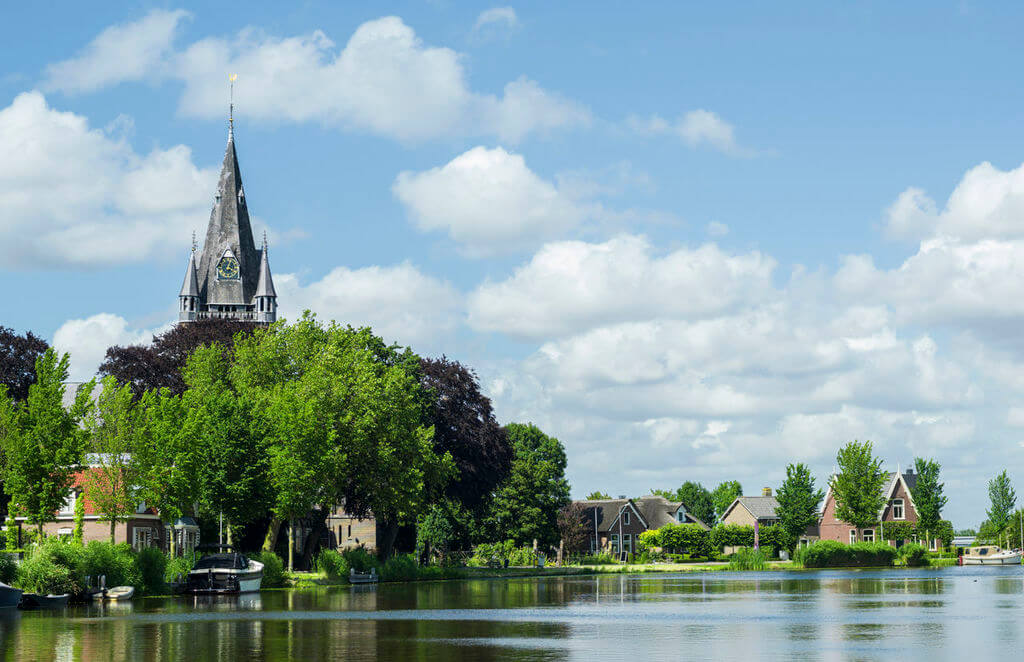
Pict: selimaksan
Working with the Water
One-half of the Netherlands is flood-prone and about one-quarter is below sea level, so it’s no wonder the Dutch spend their time developing ways to incorporate water into their style of living. The philosophy is shifting from fighting the water to living with it, or rather, on it. Instead of trying to claw back more land from the sea, developers are exploring the cost-efficiency of building homes that rise and fall with the tides. “We need to start working with the water in a more intelligent way,” Olthuis says.
This relatively new amphibious architecture is attracting interest from around the world, with floating and amphibious homes and schools now being designed for flood plains everywhere. Amphibious architecture is for both dry and wet conditions, so the houses stay dry and on the ground during normal times and then when the water arrives, they can float up.

Pict: Architect Koen Olthuis – Waterstudio.NL
Waterstudio
Olthuis wants to do much more than build a few villas. His architectural bureau Waterstudio.NL has designed complete apartment complexes, which could accommodate hundreds of people. And that is just one project. There is also a 33-meter-tall trees that can float. “Our cities have become sick environments. Green has been pushed away, but bees and other insects need quiet places. Our sea tree is like a cut-up park, which floats at a safe distance from the shore. Nature will take over on the platform and create its own ecosystem.”
Olthuis is also planning to help people in the slums of the world, which are often located on flood plains. “Worldwide you see that the most vulnerable people are being pushed into the water,” he says. This coming month he will send a floating school to Dakar – it’s a container that floats on empty plastic bottles. “The way to upgrade a slum is by installing facilities like schools and internet cafés, or easily movable small buildings that slum entrepreneurs can use. We have designed a kind of toolbox, which have 20 functions inside. This way, the entrepreneurs can choose what it is they need.”
Olthuis exports his concepts all around the globe, including to the flood zones of Hainan Island. “They have land there that they can’t use, but they will if they take our technology.” He also sells floating islands to Dubai. “Making artificial islands out of sand doesn’t work. In Dubai they built some, but they are too far away from the coast, and there is no electricity or drinking water. We are now going to put floating islands in between.”
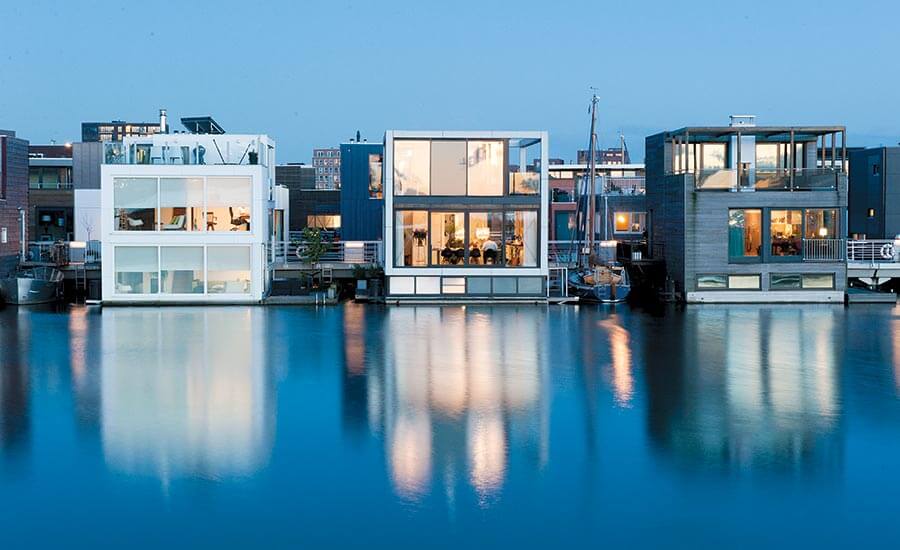
Pict: Architect Koen Olthuis – Waterstudio.NL
Fight Against the Sea
The Dutch are famous for their age-old fight against the sea, and they have the best flood management technologies in the world. In the beginning, the people in this low country put their homes on artificial hills called terpen, but they soon started building dikes. Popular in the middle ages were wierdijken, earth dikes with a protective layer of seaweed. Later dikes had a vertical screen of timbers backed by an earth bank, but these were replaced by stones after the timber was eaten by shipworms. When the polder windmill was invented in the 15th century, it meant that land could also be drained.
The dikes around the rivers were maintained by the famers who lived next to them. Special water board directors would come to check every three years. This changed radically after a devastating North Sea flood in 1953, which resulted in 1,800 deaths. The government adopted a “never again” attitude, and built dams all around the country, guarding all main river estuaries and sea inlets. According to computer simulations, today’s defenses in the Netherlands are supposed to withstand the kind of flood so severe that it would occur only once in 10,000 years.
“We have pretty much won the fight against the sea,” architect Olthuis says. “The problem now is rainwater. Holland has 3500 low-lying polders enclosed by dykes that function as sponges – they soak up excessive rain water. However, more and more of this land is now used for housing. These are ideal places to build amphibious houses.”
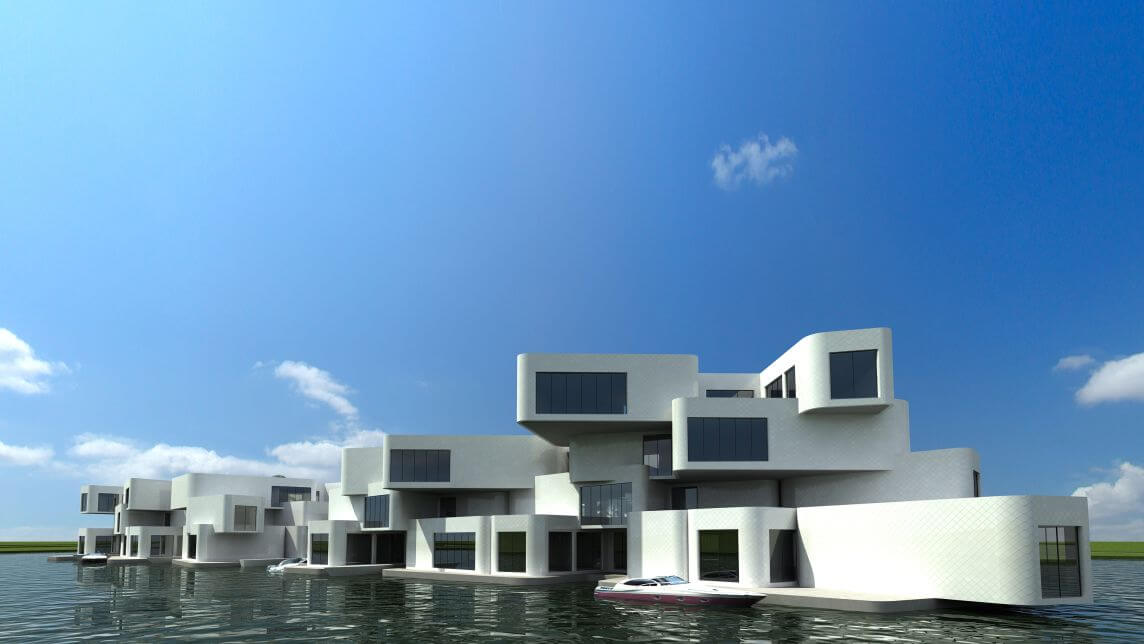
Pict: Architect Koen Olthuis – Waterstudio.NL
Rising Sea Levels
Dutch scientists predict a rise in sea levels of up to 110cm by the year 2100. “We can make the dikes higher, that’s not a problem at all. Technically, all that is possible. The problem with a high dike is that when it breaks, more water will come in,” he says.
There is also growing pressure on existing land. The Dutch government estimates that 500,000 new homes will be needed in the next two decades. Most of the land suitable for conventional building has already been used up, so Dutch architects are encouraged to experiment with new solutions. “The palace in the center of Amsterdam was built on 13.654 wooden poles. It’s the densest forest in the Netherlands. There was real innovation in those times. We are built on places where there shouldn’t be land at all. It’s not about giving up, it’s about continuing to grow,” says Olthuis.
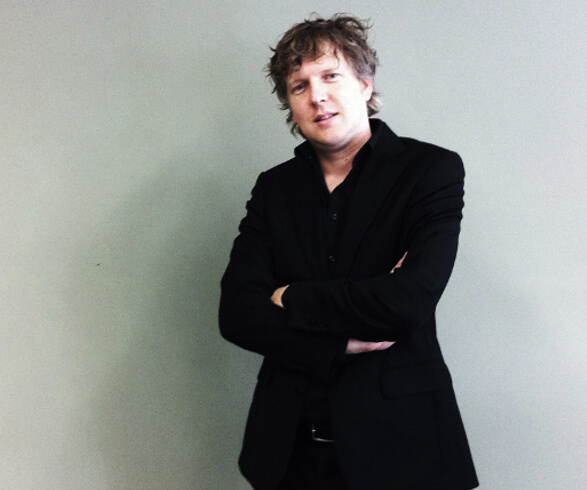
Koen Olthuis
These Floating Sea Trees Could Bring Wildlife Back to Big Cities
By Tailor Hill
Takepart
August.2015
The offshore structures would provide habitat for animals, birds, and fish.

Taylor Hill is an associate editor at TakePart covering environment and wildlife.
In the world’s biggest cities, it’s hard enough for humans to find a little elbow room—now think about carving out habitat for wildlife in places like Manhattan.
Dutch architect Koen Olthuis thinks he has the design that can extend urban sprawl into city waterways—but instead of floating high-rises offshore, he envisions wildlife oases within city limits.
Called Sea Trees, the steel structures are based on existing offshore oil platforms. Anchored to the ocean or river floor, Sea Tree pillars would extend above and below the water surface, providing “layered” habitats—almost like the floors of a skyscraper—for flora and fauna.
“Oil companies have used these floating storage towers for years, we only gave them a new shape and function,” Olthuis said in a statement.
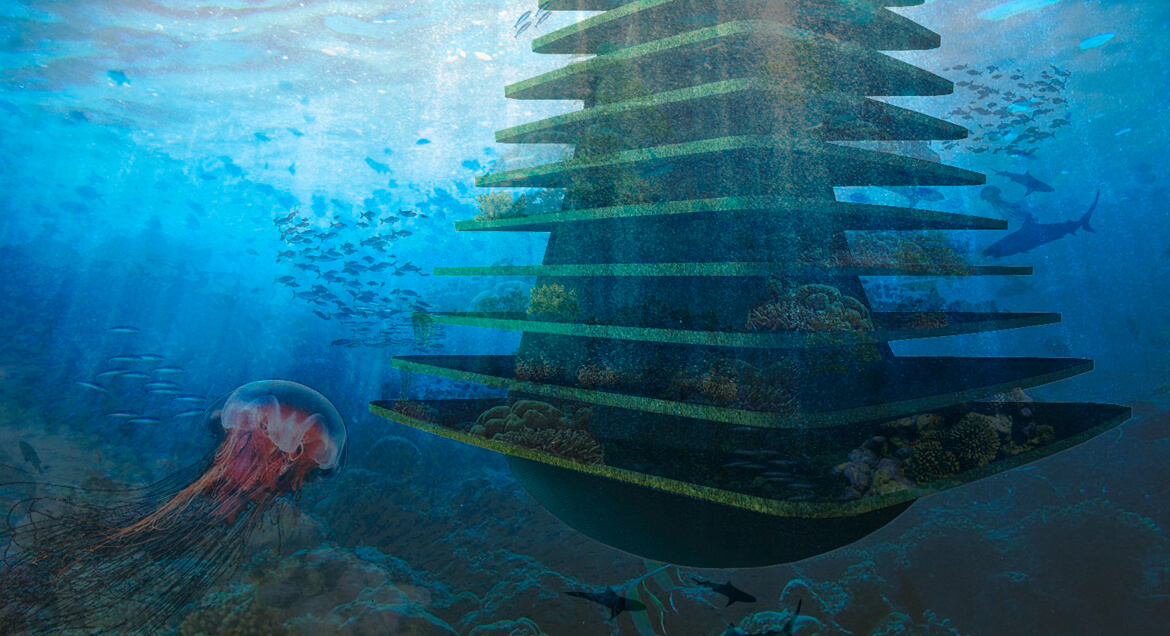
Olthuis, head architect at Waterstudio, thinks Sea Trees could bring animals back to areas taken over by humans, helping to stem falling wildlife populations.
“It is becoming evermore difficult to allot an appropriate amount of land for the conservation of wildlife habitats within city limits,” said Olthuis. “Sea Tree would provide the ideal environment for a multitude of species, not to mention a significant reduction in CO2 emissions.”
Rivers, oceans, lakes, and harbors could all be potential locations for Sea Trees, giving a home to birds, bats, and bees above the waterline while providing habitat for fish, crustaceans, and even coral reefs below the surface.
Waterstudio imagines a forest of Sea Trees built off the Manhattan and Brooklyn waterfront; it could provide living spaces for wildlife along some of the most expensive stretches of real estate in the United States.
Olthuis designed Sea Trees to be inaccessible to humans.
“Water is, of course, a perfect way to keep people away,” Olthuis said. “In the end, it has become a vertical hangout for wildlife.”
While the concept is still in the development phase, Waterstudio thinks Sea Trees could be built today because much of the technology exists. The architecture firm estimates each Sea Tree would cost about $1.2 million, depending on the water depth and construction materials used.
“Large oil companies will have the opportunity to give back by using their own intellectual property and resources to donate Sea Trees to a community in need, showing their concern and interest in preserving the distressed wildlife,” Olthuis said.
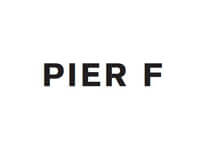
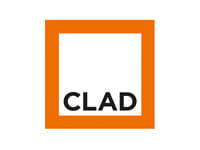
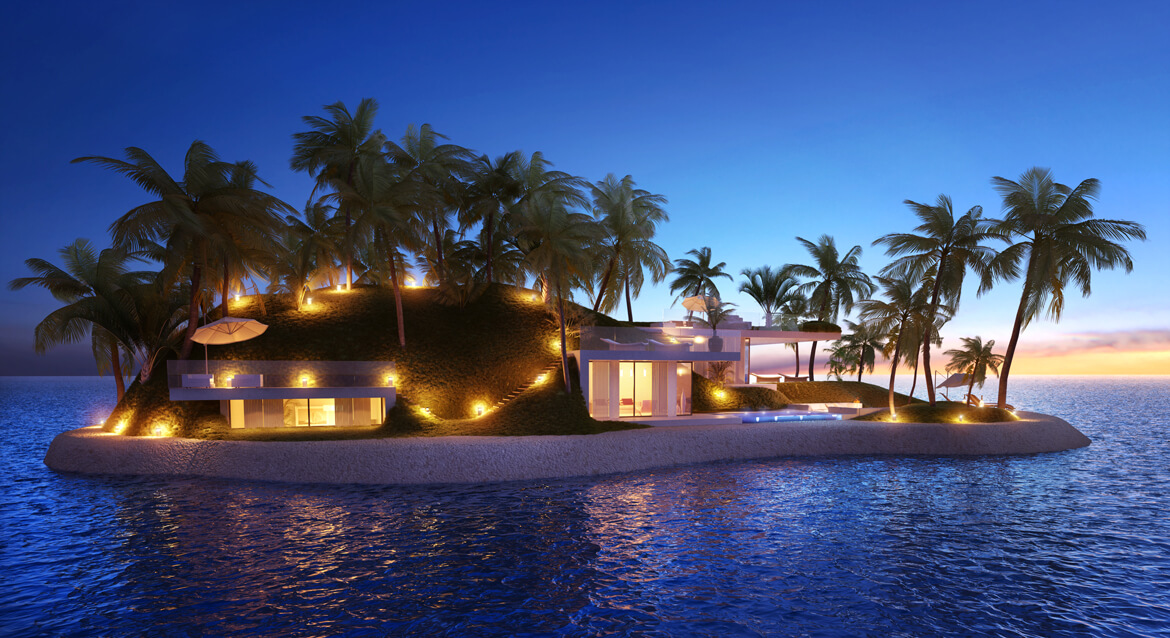
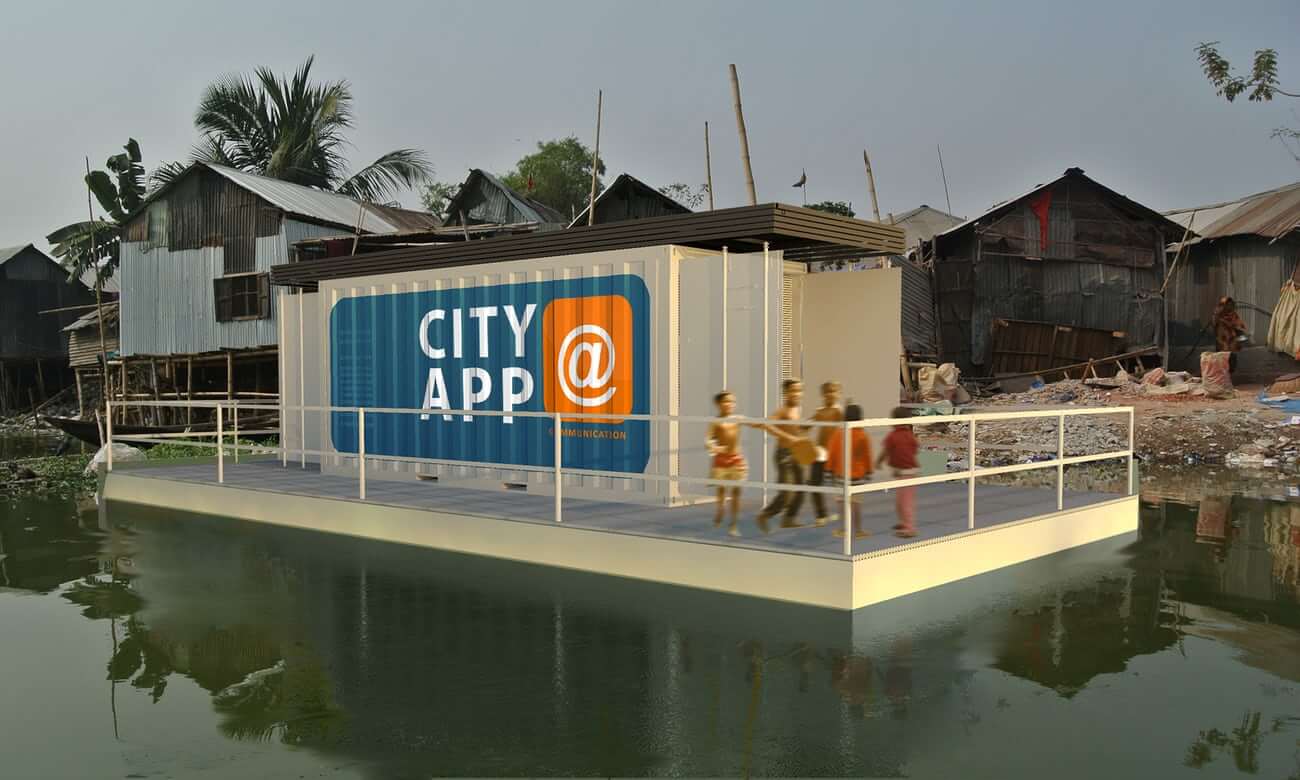
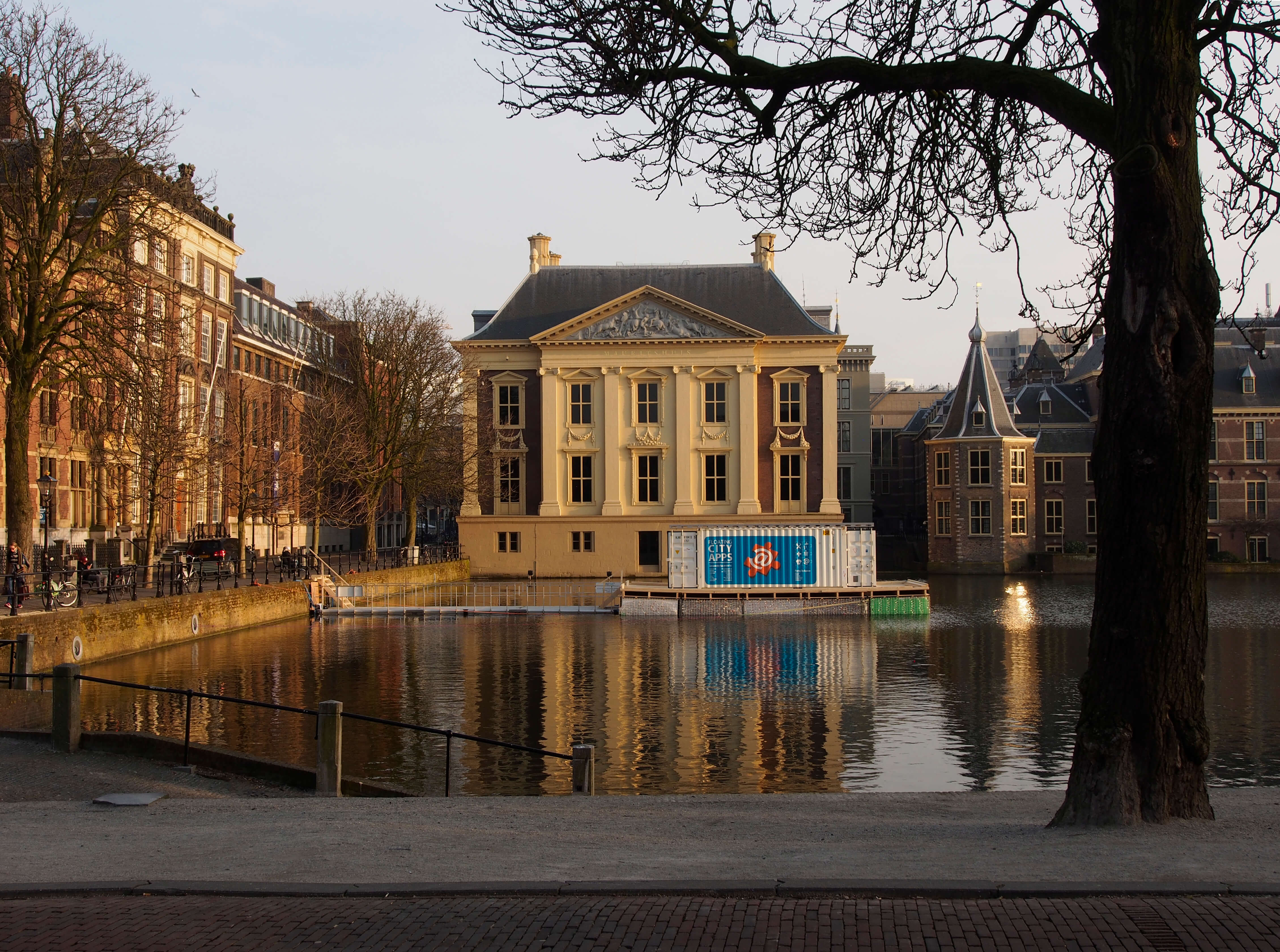
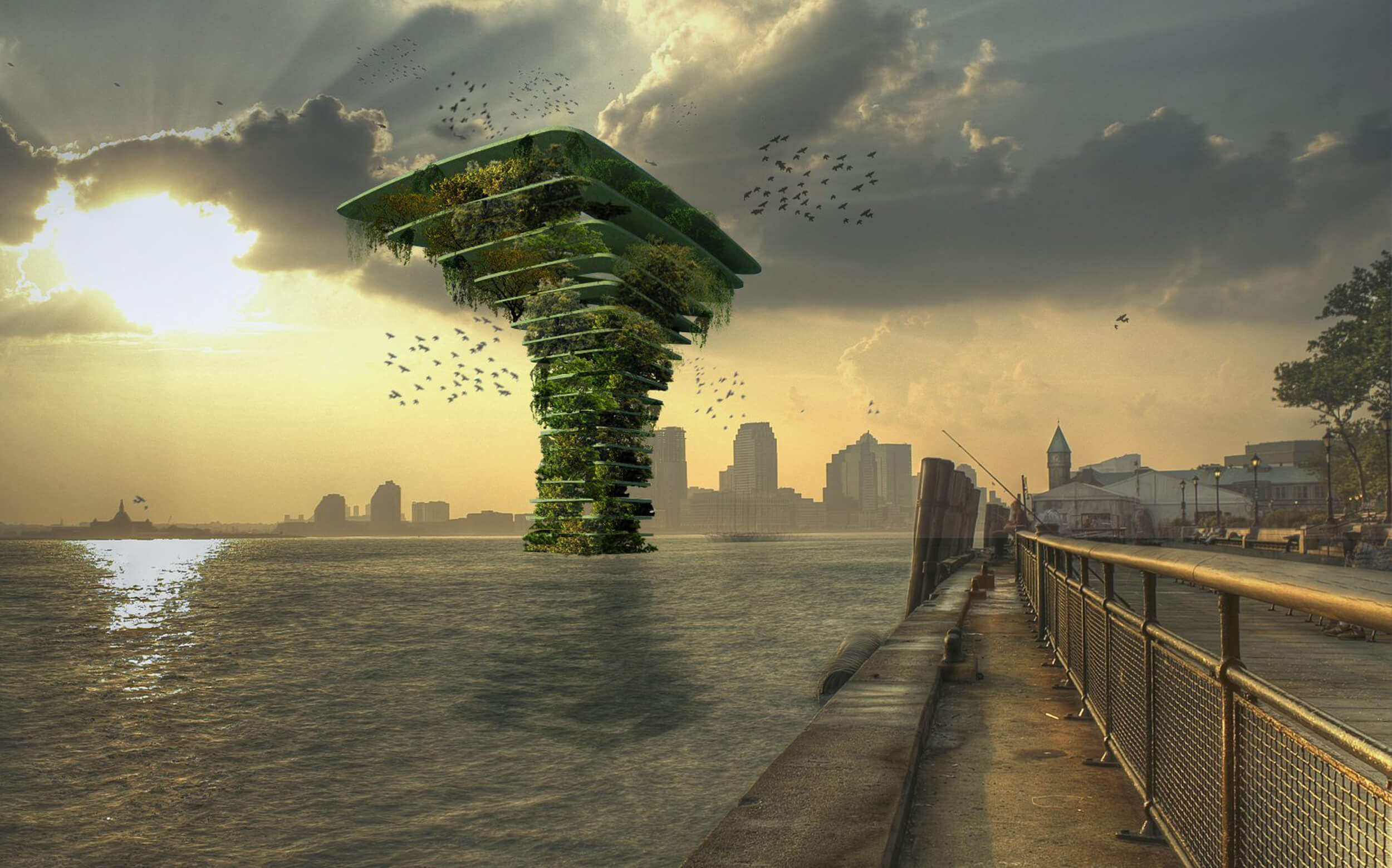
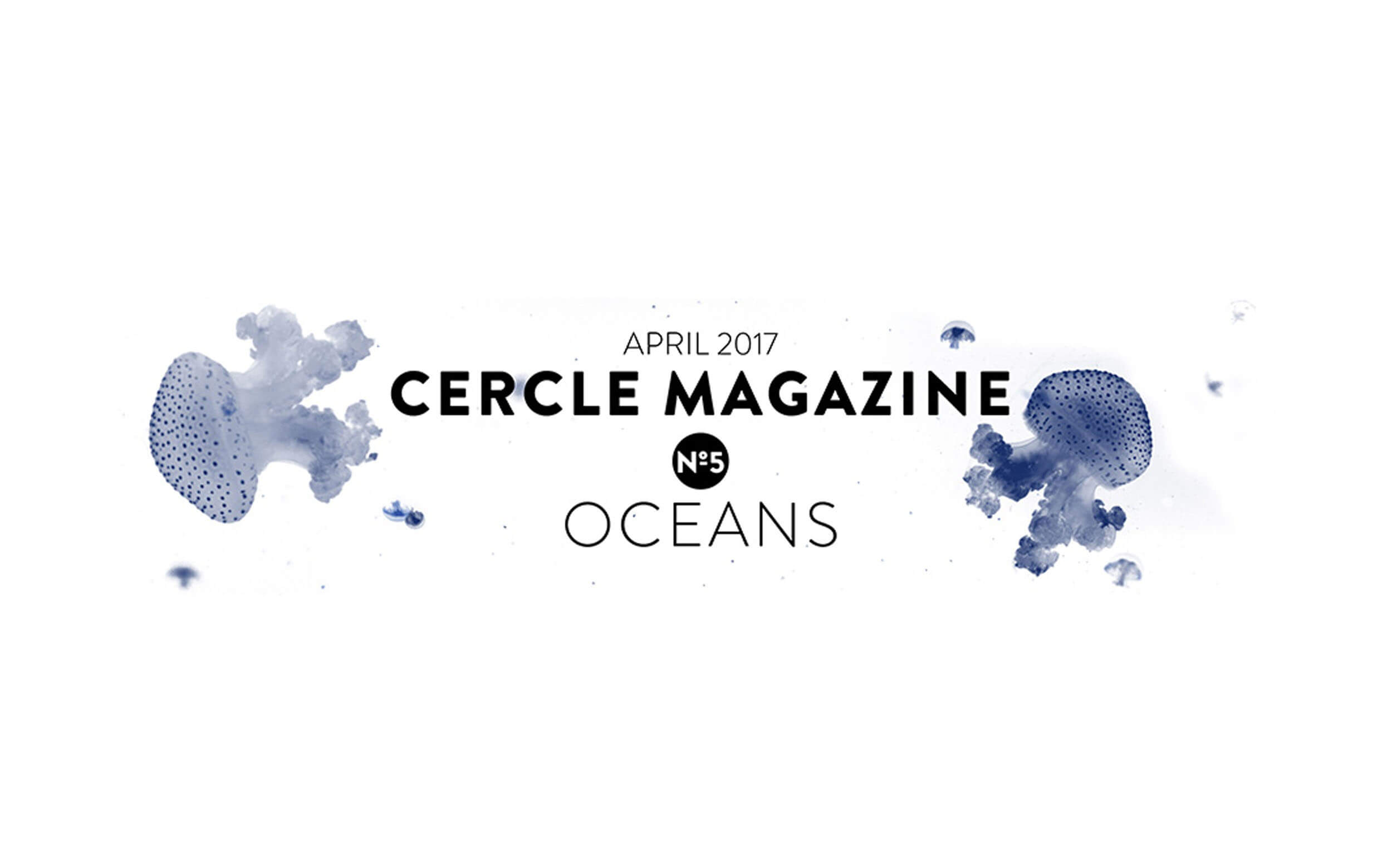


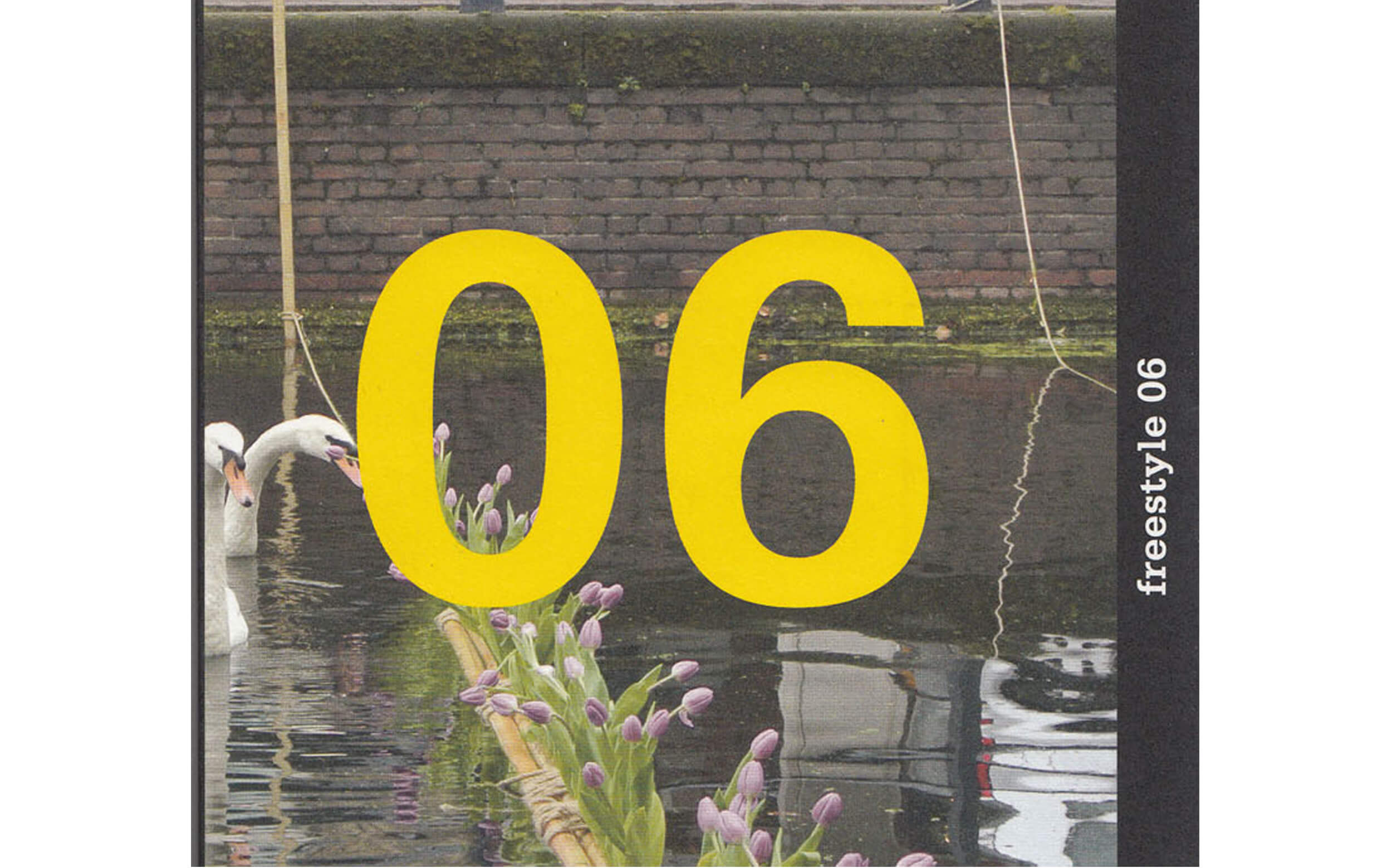
 By Tanja Lina
By Tanja Lina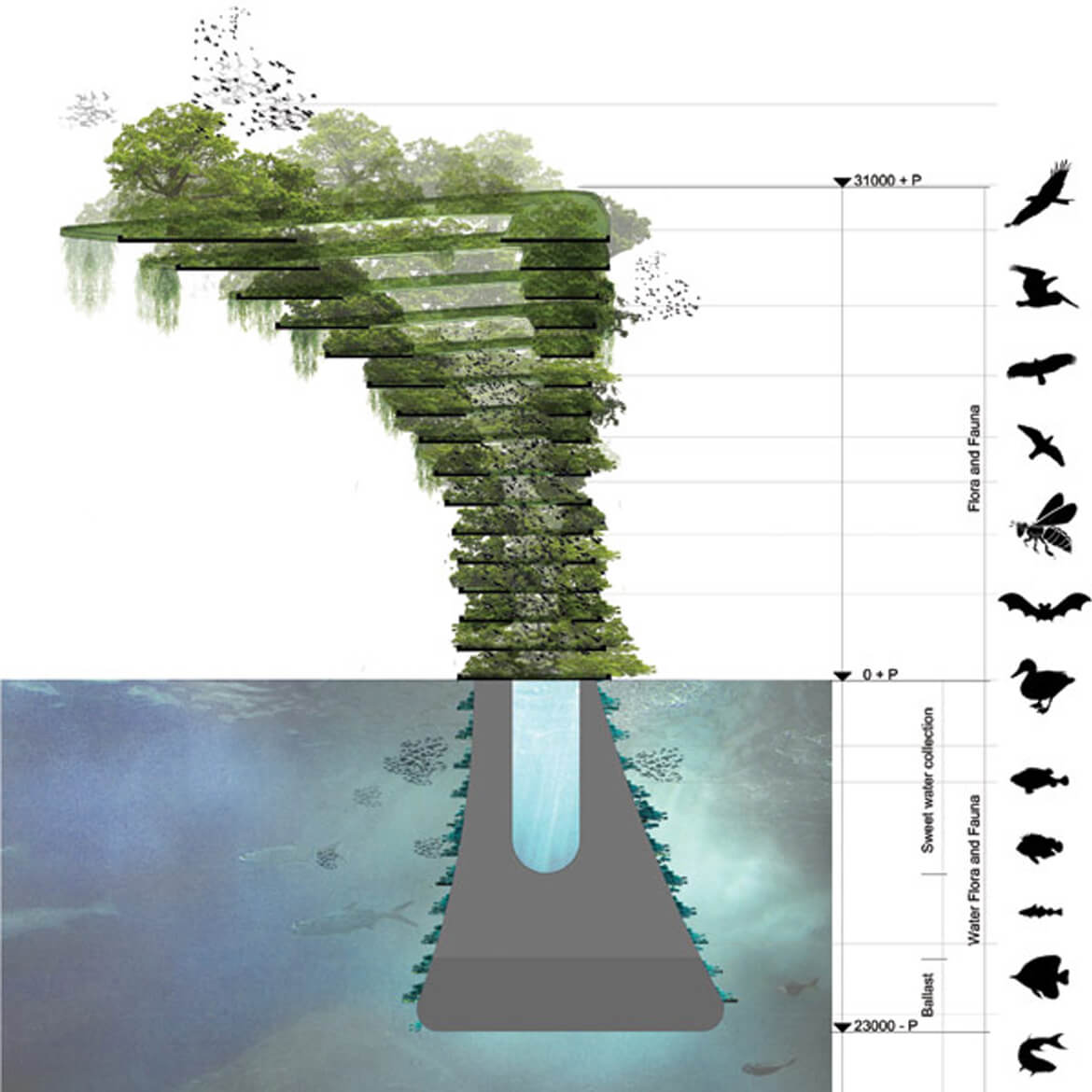
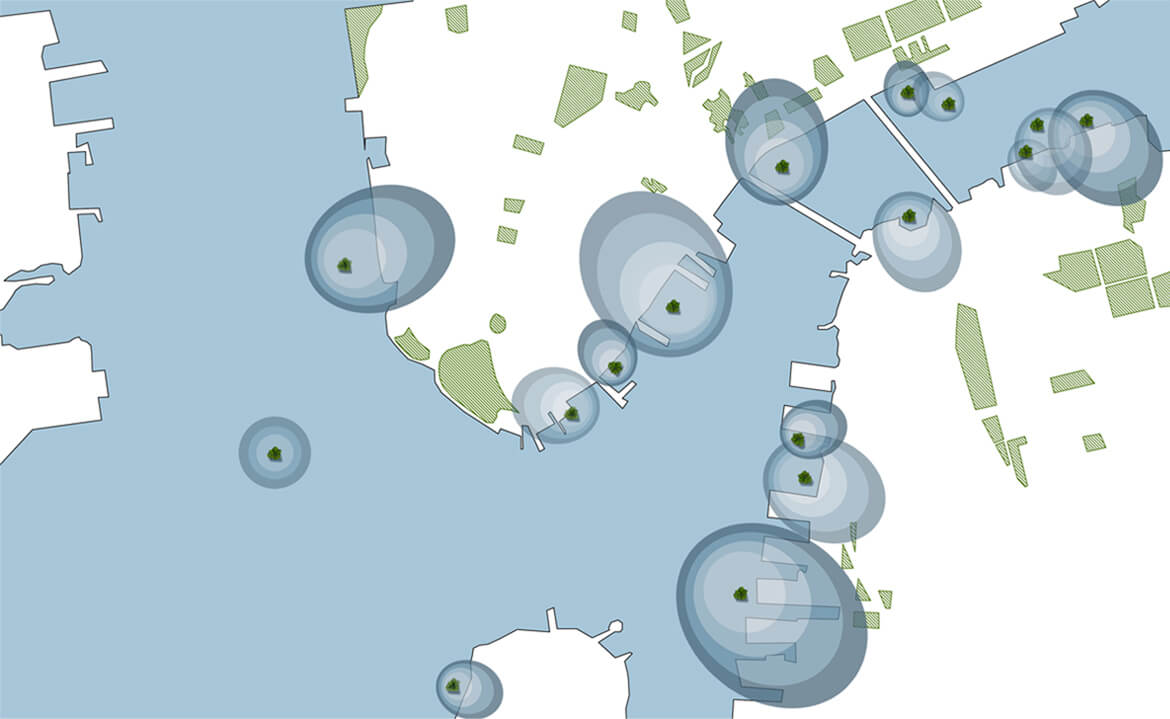
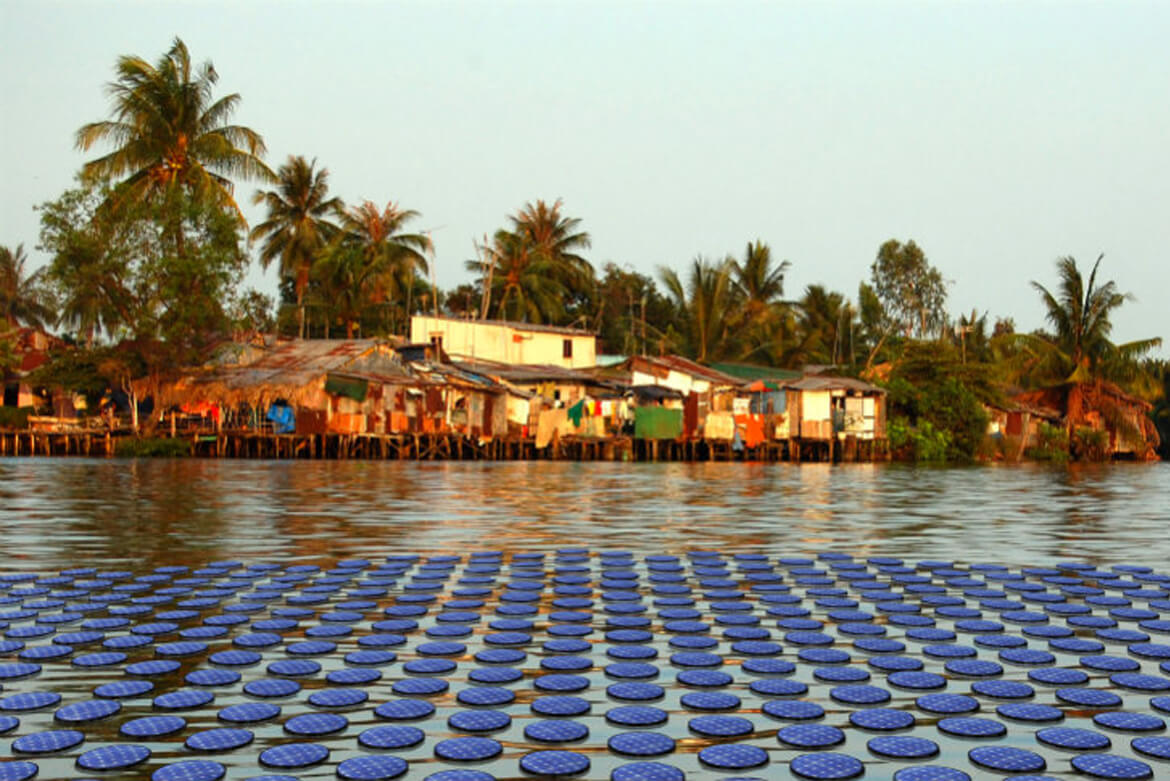
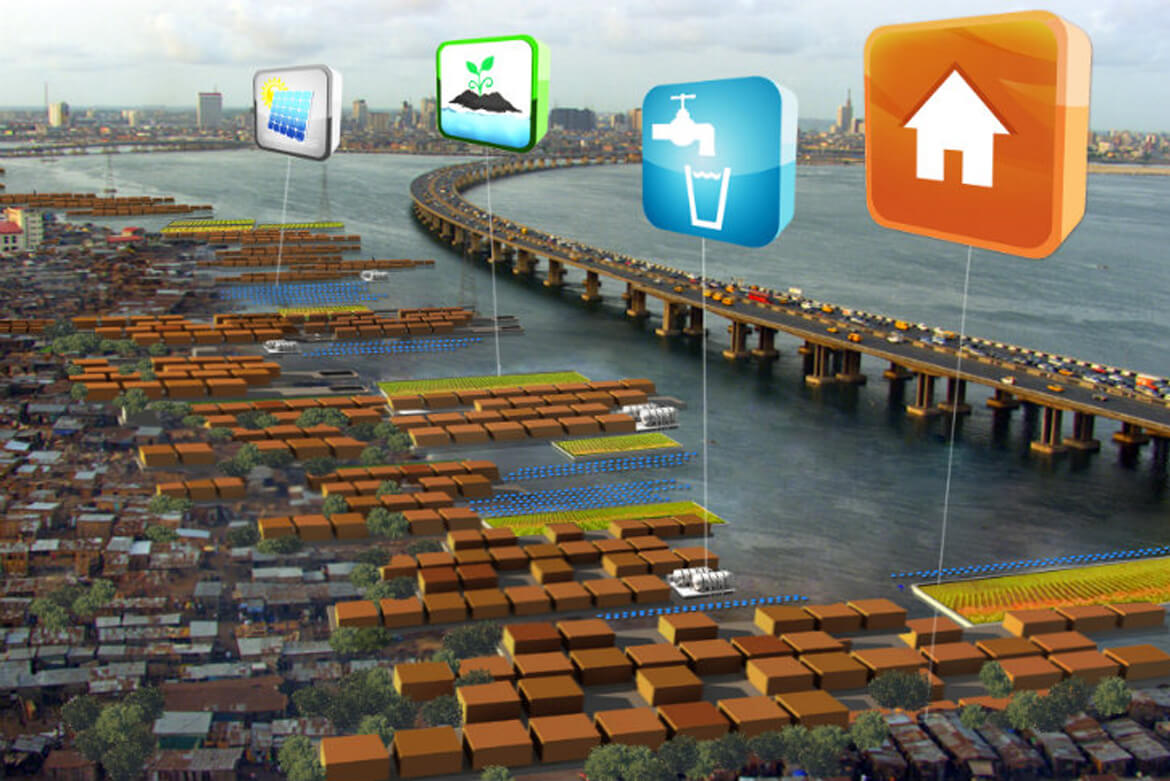

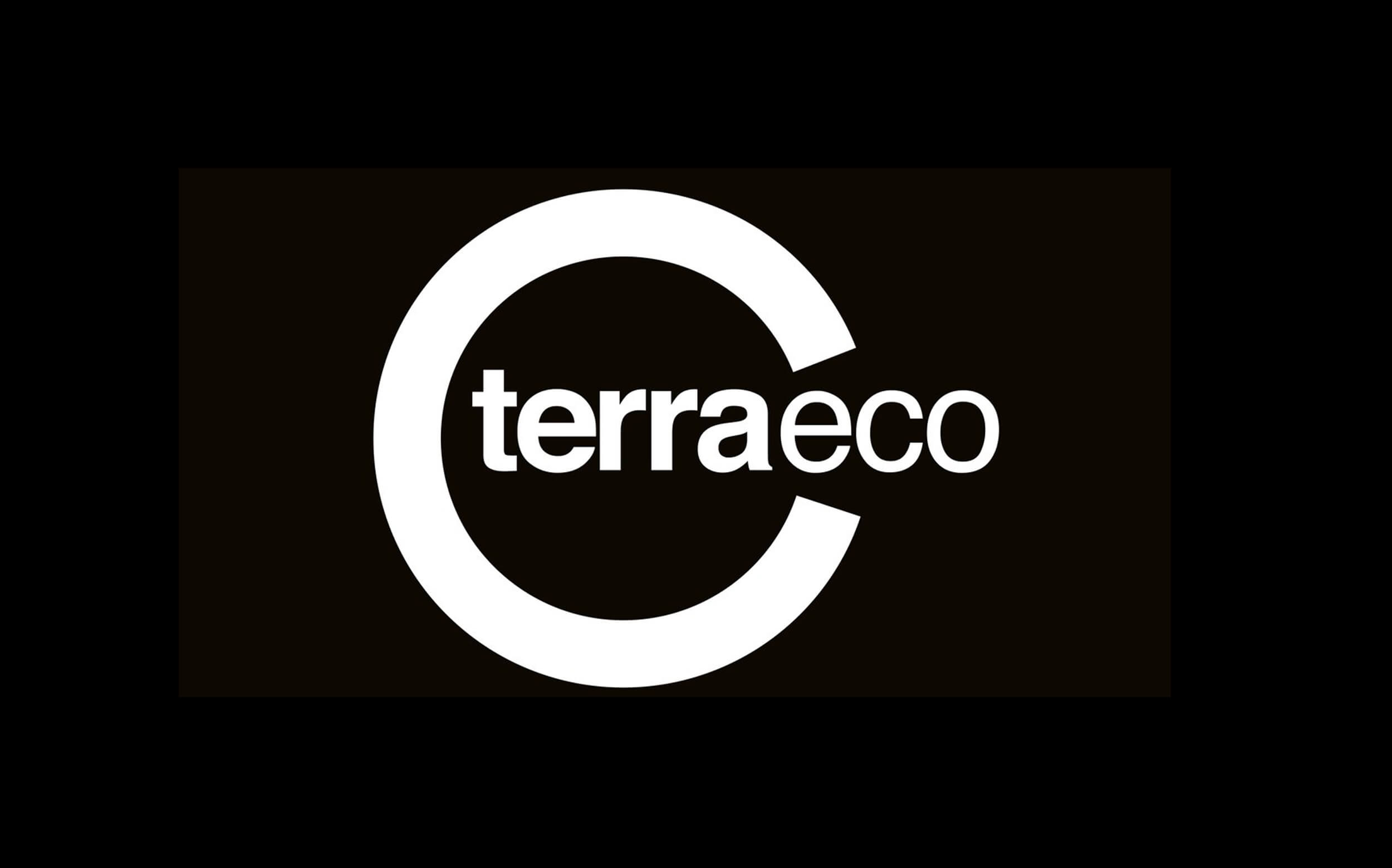

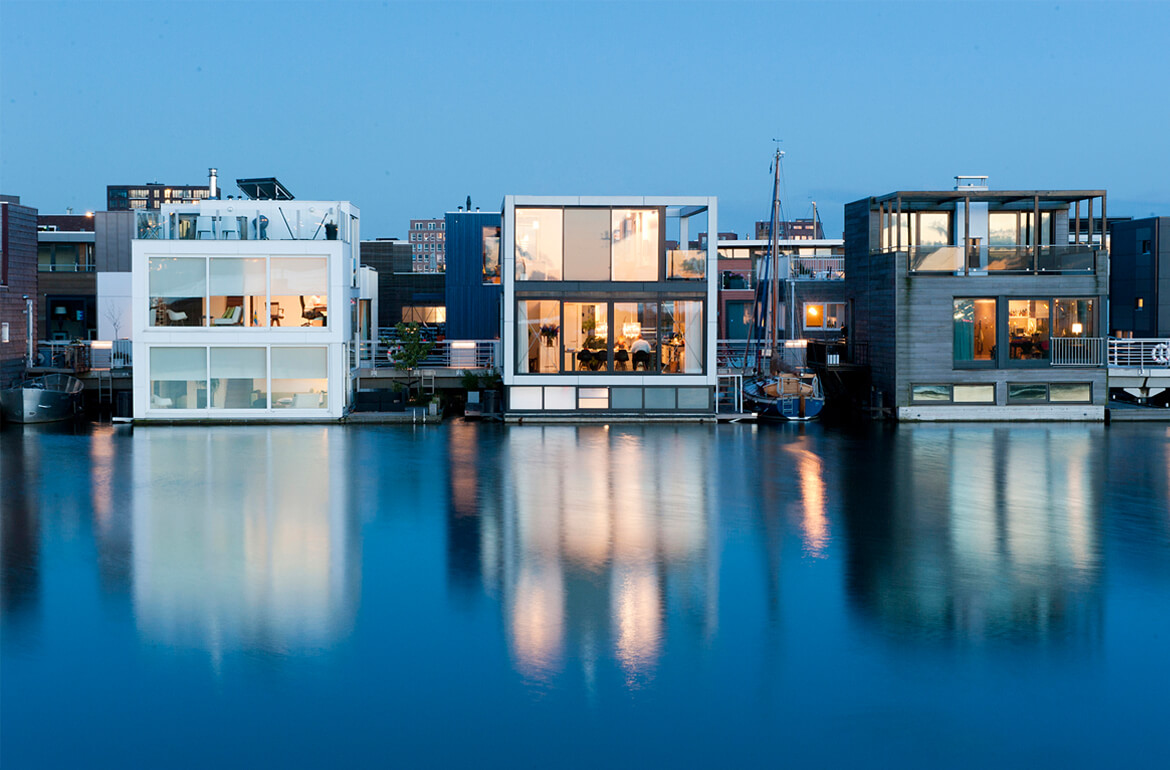


 By Haus mit Zukunft
By Haus mit Zukunft